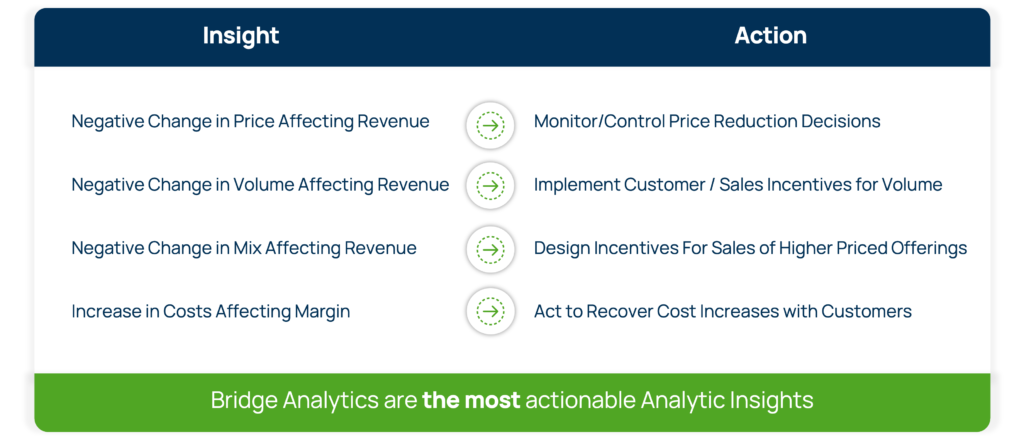
Many B2B businesses use reference pricing to make sure their offers stay relevant in the market. This requires a review and approval process to update those prices periodically. However, there are significant variations of frequency and scope. Plus, the granularity of the pricing process and how it is managed – even in a single business unit – adds even more complexity. Organizing the review and approval process to leverage the business’ product, market, and price structures can significantly increase the efficiency and accuracy of this routine business process.
Deploying suitable analytics into the process will further improve the expected results. The most essential and beneficial analytics framework that is especially useful in conjunction with the price revision process is Price-Volume-Mix (PVM) analysis.
Using Analytics to Make Fact-Based Price Changes
PVM analysis should be performed as the first and last step of your process. At the beginning of the process, the PVM analysis allows you to understand the recent market movements and their impact on business performance. It will help you answer questions like:
- What impact did your pricing have on your revenue and profitability?
- How much change was driven by volume variations?
- Did your customers transition from high-revenue, low-margin products, or vice versa?
At the end of the process, and between revisions, the analysis is performed to determine if the planned impact in the revision is captured.
Vendavo Margin Bridge Analyzer will help you build custom revenue and margin bridges. You can generate your own price-volume-mix models that meet your organization’s unique needs for aggregating data, defining mix, and drilling down through your analysis.
Price-Volume-Mix Analysis in nutshell:

Using Structures in Price Revision
With PVM analysis, you gain a good understanding of the impact of recent market movements on your business, and whether your actions are achieving the desired performance. At a granular level, this is used to plan for the next revisions and iterations for pricing. Keep it simpler by using your organization’s product and market structures for familiarity and to drive insight for corrections. Product structure is best used to allocate the price changes to those product segments where they are easiest to push through to customers.
Product-focused allocations should be planned and activated first, followed by local adaptions executed based on the already changed prices. This ensures the price alignment on both product and market-level.
Learn more about how to apply PVM analysis to identify issues and drive better outcomes in the expert eBook, Practical Guide to PVM Analysis.